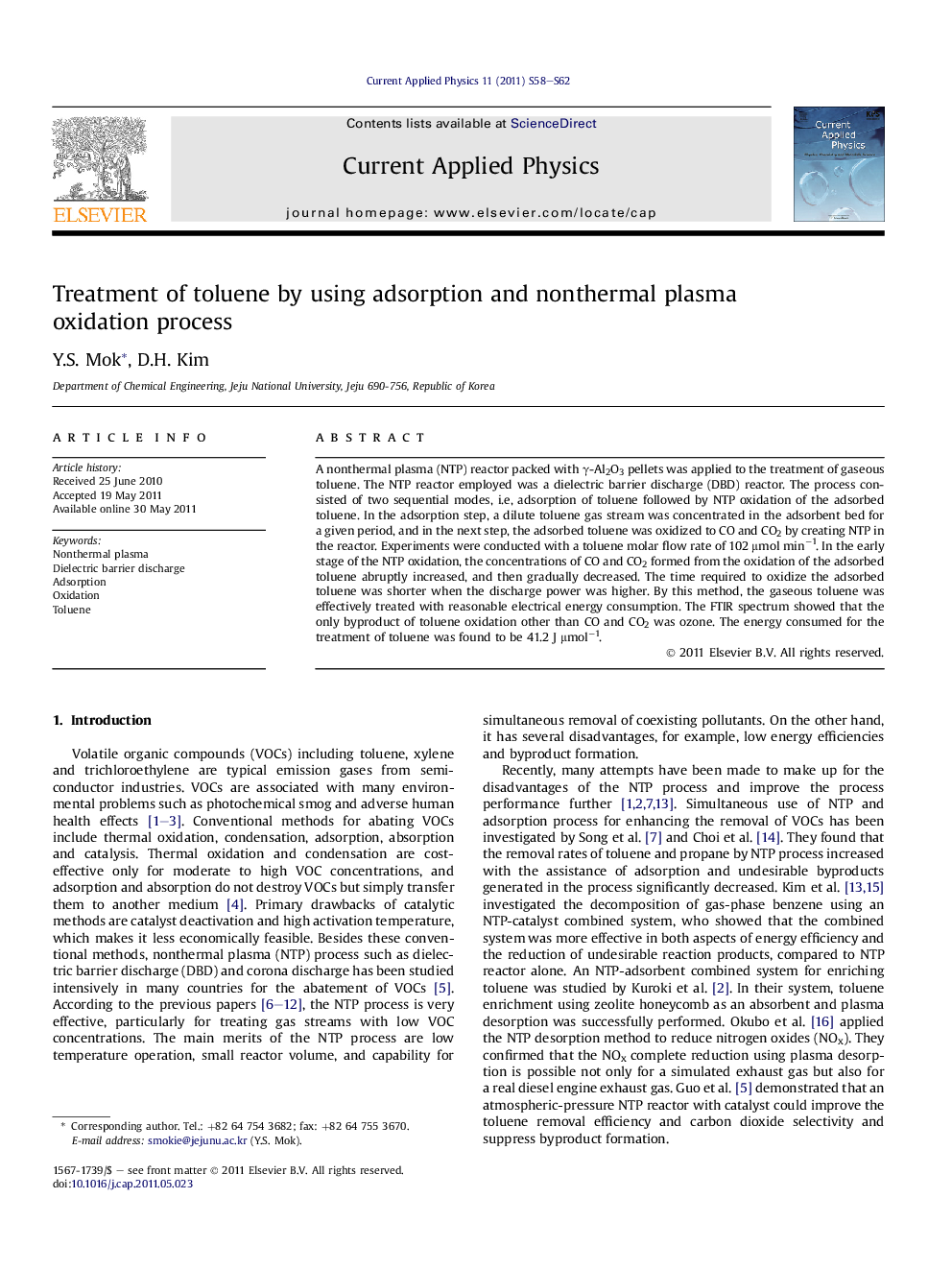| Article ID | Journal | Published Year | Pages | File Type |
|---|---|---|---|---|
| 1787595 | Current Applied Physics | 2011 | 5 Pages |
A nonthermal plasma (NTP) reactor packed with γ-Al2O3 pellets was applied to the treatment of gaseous toluene. The NTP reactor employed was a dielectric barrier discharge (DBD) reactor. The process consisted of two sequential modes, i.e, adsorption of toluene followed by NTP oxidation of the adsorbed toluene. In the adsorption step, a dilute toluene gas stream was concentrated in the adsorbent bed for a given period, and in the next step, the adsorbed toluene was oxidized to CO and CO2 by creating NTP in the reactor. Experiments were conducted with a toluene molar flow rate of 102 μmol min−1. In the early stage of the NTP oxidation, the concentrations of CO and CO2 formed from the oxidation of the adsorbed toluene abruptly increased, and then gradually decreased. The time required to oxidize the adsorbed toluene was shorter when the discharge power was higher. By this method, the gaseous toluene was effectively treated with reasonable electrical energy consumption. The FTIR spectrum showed that the only byproduct of toluene oxidation other than CO and CO2 was ozone. The energy consumed for the treatment of toluene was found to be 41.2 J μmol−1.
► An energy-efficient nonthermal plasma (NTP) process consisting of two sequential models, adsorption followed by NTP oxidation, was developed for abating dilute toluene. ► All of the toluene adsorbed on γ-Al2O3 was converted into CO and CO2 with reasonable energy consumption. ► The only byproduct of toluene oxidation other than CO and CO2 was ozone, of which concentration could be controlled by discharge power.
